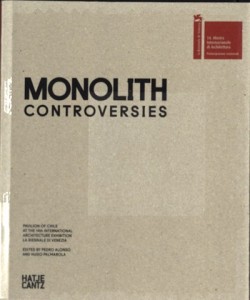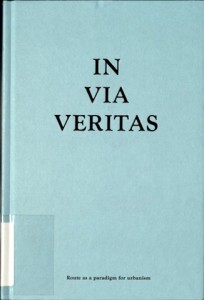De Bruyn, Joeri, Maarten Van Acker, Filip Buyse, Frédéric Rasier, and Peter Vanden Abeele, editors. In Via Veritas: Route as a Paradigm for Urbanism. Mechelen: Public Space, 2014.
The word ‘route’ is a contraction of the Latin phrase via rupta. Via means ‘road’, while rupta comes from the verb rumpere, ‘to break open’. A route is a road that is broken open, opened, cleared, freed, forced, or paved. A route is the result of an act of violence- rupture. The route carves its way into the landscape. The route breaks open the world. (pg. 11)
The authors identify three archetypes of routes: procession, distribution, and migration. They create further classifications in each archetype. Procession contains pilgrimage, parade, course, stroll, and patrol; distribution- trade route, rounds, scavenger route, smuggling route; and migration- emigration, trek, commute, journey, flight, deportation. They define each classification and then examine these types in relation to the N16 in Flanders. Finally, the authors explore case studies for each of the archetypes.
Alonso, Pedro and Hugo Palmarola, editors. Monolith Controversies. Ostfildern: Hatje Cantz, 2014.
 Monolith Controversies is the title of the Chilean exhibition for the 14th Venice Architecture Biennale as well as the name of the corresponding publication. The Chilean exhibit was curated by Pedro Alonso and Hugo Palmarola.
Monolith Controversies is the title of the Chilean exhibition for the 14th Venice Architecture Biennale as well as the name of the corresponding publication. The Chilean exhibit was curated by Pedro Alonso and Hugo Palmarola.
According to Germán Guerrero Pavez, Ambassador, Director of Cultural Affairs of the Ministry of Foreign Affairs, Government of Chile:
Chile is represented by Monolith Controversies, a project by Pedro Alonso and Hugo Palmarola based on an original panel produced by the KPD factory, of Soviet origin, which used to operate in the city of Quilpué. The panel contains a unique, symbolic and historical value, as President Salvador Allende signed the wet concrete when inaugurating the plant in 1972. The fate of this panel, and the way it was re-signified during the subsequent dictatorship, as well as its current status as a ruin of modernity, is telling of the history of prefabricated housing in Chile and in the world, which is narrated from within such a basic support for construction: a neutral panel, whose reading the curators leave open to the public. (introductory material)
The book contains a series of essays and photo essays connected to the exhibit and the history of the KPD & panel.

